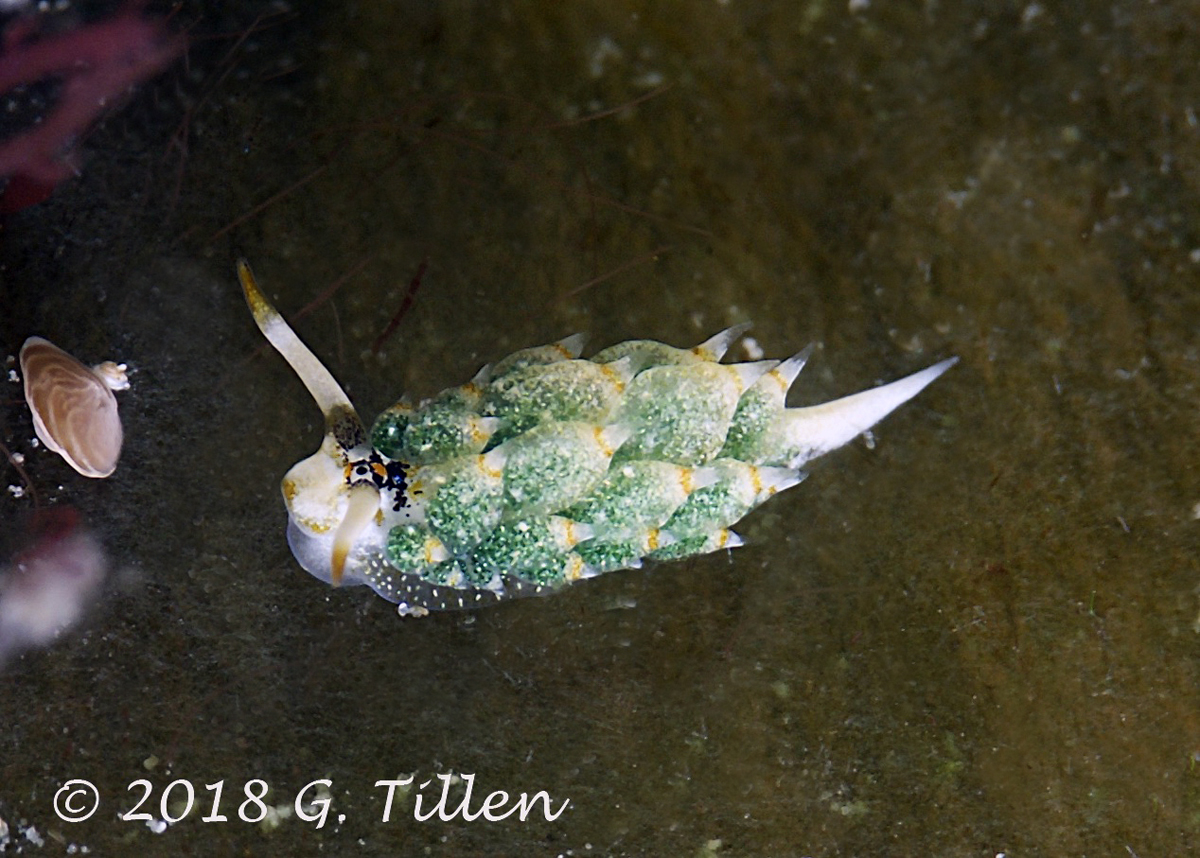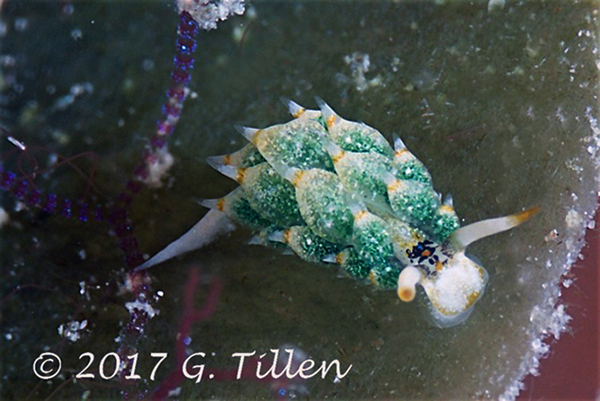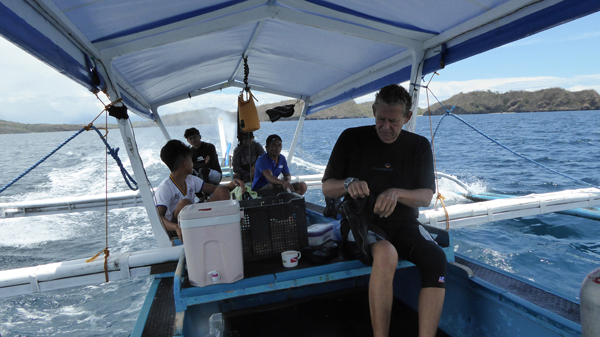 |
Image courtesy of Gordon Tillen
Dauin, Philippines
Image taken at Dauin, Philippines
 |
Costaciella sp. 1 Undescribed Well I think we have decided to call this cutie Costaciella sp. 1, in the new edition of NSSI. Thats about as close as we can come, if we can assumme that the marking behind the rhinophores varies between specimens. The body is grey with green cerata. Each ceras has a subapical gold band. The rhinophores are white, tipped with gold. The black pigment behind the rhinophores appears to be variable from forming an oval to a series of randon blotches as seen in Gordon's photo here. This species has a wide geographic distribution, occurring across the tropical Indo-Pacific and feeds on the algae, Avrainvillea sp.
Sammamish, WA 98074 Dec., 2018 Send Dave email at davidwbehrens@gmail.com |
Gordon on location at Anilao, Batangas, Philippines
 |
Gordon Tillen is a retired American businessman living in the Philippines since 2008. He has logged over 3000 dives across the Coral Triangle and the Caribbean. His current equipment is a Canon 5D MKIII with YS-D1 strobes and Sea & Sea housing. Currently resides in Sibulan, Negros Oriental, PH.
Send Gordon email at gtillen53@gmail.com |

Attention all you Sluggers, and you know who you are! The NSSI 2nd edition is now available in ebook PDF and book form . The hard back version will become available Nov. 1st. Both will cost $65 (individually). You will need to jump through a few hoops to get the electronic version as pdf distribution is protected by Adobe ID!! Please read the following to enable reading your electronic purchase! This new 2nd Edition is updated and reorganized, including 185 new species. Among other features, the new edition includes additional photographs of species, an identification key, and an up-to-date classification reflecting the latest evolutionary relationships. The Indo-Pacific represents the largest expanse of tropical ocean in the world, stretching from the Indian Ocean coast of southern Africa and the Red Sea to the central Pacific of the Hawaiian Islands, Easter Island and the Marquesas. This region supports the most diverse marine fauna of any place in the world for most groups of marine organisms. The nudibranchs and sea slugs are no exception to this rule; there are about 3,000 described species of these organisms in the world and at least 40% of these have been found exclusively in the Indo-Pacific tropics. This book illustrates 2,138 Indo-Pacific nudibranchs and sea slugs, including many undescribed species.
|

|
